
26 best reusable food storage bags and containers.
We've pulled the top 26 best reusable food storage containers and bags determined by Grove members. Select from any on the list and get them delivered to your door!
Read More


Last Updated: November 5, 2021
Need a quick refresher on how long those leftovers are safe to eat? Keep reading to learn more about the right ways to store leftovers and the best food storage options for food freshness and convenience.
Storing leftover food is a great way to stretch your meal planning budget to cover multiple meals, avoid food waste, and ensure you have plenty of healthy, homemade meal options ready to eat throughout the week. But even expert meal savers and preppers sometimes have questions about food safety.
Food-borne illnesses are a major concern when it comes to storing fresh foods, and it’s important to be well-versed in the best practices for storing leftovers to keep you and your family safe.
Need a quick refresher on how long those leftovers are safe to eat? Keep reading to learn more about the right ways to store leftovers and the best food storage options for food freshness and convenience.
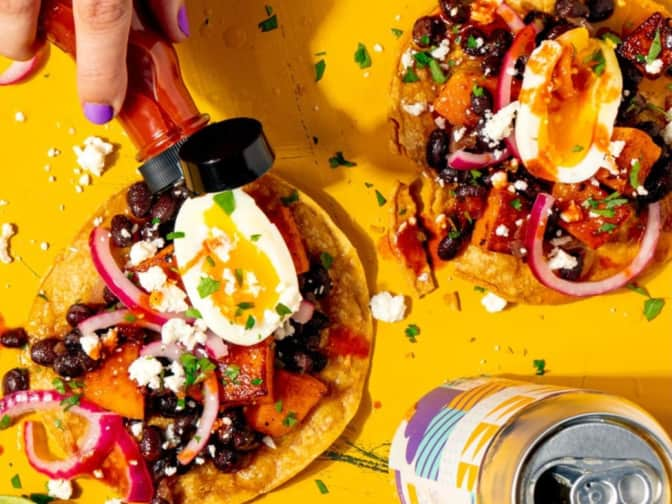
Most leftovers can be stored safely in the refrigerator for about three to four days, according to the Mayo Clinic.
This guideline includes:
Raw poultry or sausage should only spend one to two days in the refrigerator. The Food and Drug Administration (FDA) also recommends any packaged food be thrown out after seven days.
Grove Tip
Bacteria in contaminated leftovers won’t necessarily change the taste, look, or smell of a food, so it’s a good idea to label leftover foods with the date they were stored and throw them out if there’s any doubt about their safety.
Freezing food is the main way to make it last significantly longer.
Once food is thawed, bacteria can begin to grow, so be sure to follow refrigerator storage guidelines after defrosting.
Additionally, don’t allow leftovers or defrosting foods to sit out at room temperature. Foods should always be eaten or refrigerated promptly.

Glass and plastic food storage containers are both popular options for keeping leftovers fresh.
Glass containers may come with a few added benefits, such as:
Both types of containers will help food stay fresh and are safe to use; however, experts say if you’re using plastic containers, it’s important to choose containers that are free of phthalates and the chemical BPA.
Sustainability is also an important factor to consider. About half of plastics produced are designed to be used only once, and single-use plastics, like traditional sandwich bags and other disposable food storage options, contribute to pollution in waterways and landfills.
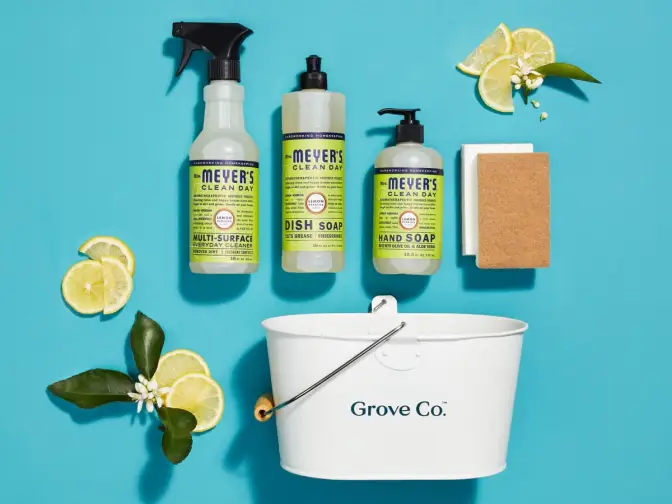
Wondering who Grove is, what types of products we offer, and how to get a free gift set when you sign up? Learn more about flexible monthly shipments, customizing your shipment, and joining millions of happy households — no monthly fees or commitments required.
Grove Tip
Phthalates, which are added to plastic to make it more flexible, can be transmitted to the body when people eat or drink items that have been in contact with them.
Similarly, the Centers for Disease Control and Prevention (CDC) cautions people can be exposed to an industrial chemical compound C15H16O2 that is a component especially of hard plastics (such as polycarbonate) and epoxy resins. via products that contain it. BPA is short for bisphenol A and it is “an industrial chemical compound C15H16O2 that is a component especially of hard plastics (such as polycarbonate) and epoxy resins.”
For quickly wrapping up produce and lunch items, recycled aluminum foil is always a good option.
But if you’re looking for other fresh food storage options that are functional, innovative, and more earth-friendly, here are five top-rated options for meal prep to Thanksgiving leftovers.

Store soups, sauces, jams, and pickled foods in these durable and beautiful jars made from all-natural materials.
Le Parfait jars are food safe, heat safe, leak proof, and 100% recyclable. Many members also use them to conveniently store dry pantry items, like pasta, beans, and baking supplies.
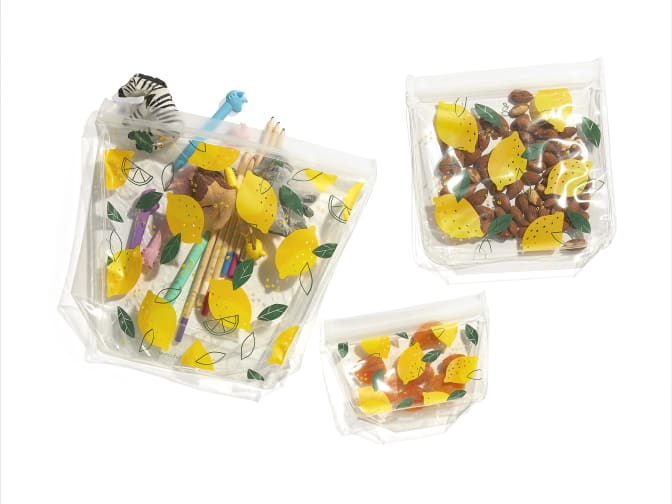
These Grove member favorites are made of durable, food-safe, reusable, phthalate-free, and bpa-free plastic.
They come in three convenient sizes: snack, sandwich, and storage size. And, since they’re freezer safe, leakproof, and dishwasher safe, they’re an ideal choice for storing leftovers while reducing single-use plastics and food waste.
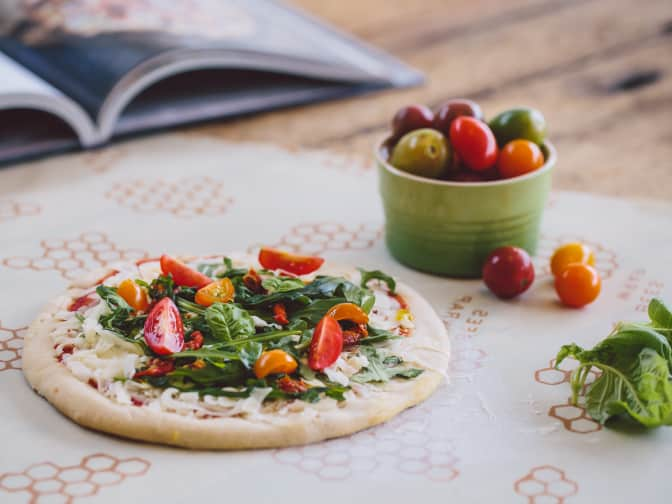
Replace single-use plastic wrap with this natural and reusable alternative. Bee’s Wrap is made of Global Organic Textile Standard (GOTS) certified cotton, beeswax, jojoba oil, and tree resin and produced using renewable energy.
It’s BPA-free, completely reusable, and can be custom cut to fit fresh vegetables, cheeses, sandwiches, or over the tops of containers.
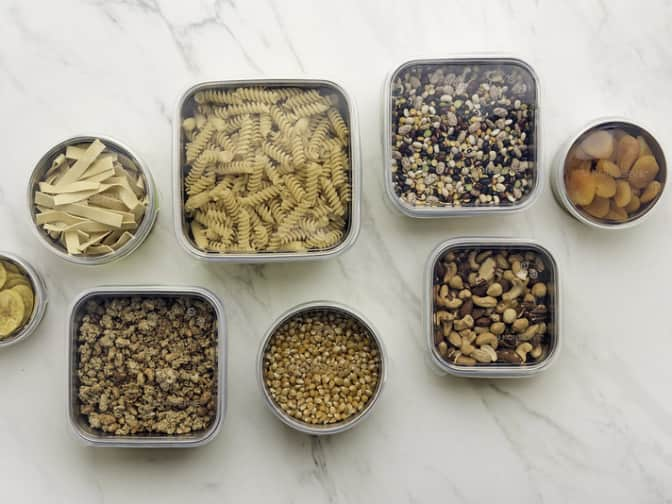
This stainless steel food container is BPA-free, lead-free, phthalate-free, and plastic-free. And, at 30-ounces, it’s big enough for takeout, salads, and other larger food items.
The light stainless steel is safe for both the refrigerator and the dishwasher, plus other U-Konserve containers come in a range of sizes and have tare weights so they’re ideal companions for bulk shopping.
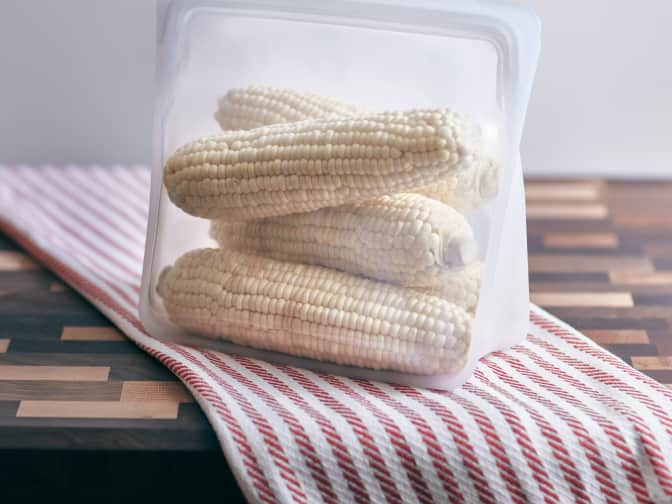
Looking for a reusable storage option for larger items, like lettuce, fresh meats, and bulk produce? The Mega Bag by Stasher is a reusable, 100% food-grade silicone option that’s safe for microwaves, freezers, and in the dishwasher.
Grove members love its stand-up design that makes it ideal for holding liquids and other items without toppling over. Stasher offers other silicone bags in a variety of sizes as well.

We've pulled the top 26 best reusable food storage containers and bags determined by Grove members. Select from any on the list and get them delivered to your door!

Grove writer, Carly Reynolds, discovered three durable and sustainable food storage solutions that will help you minimize waste while maintaining convenience. But which one was her favorite?
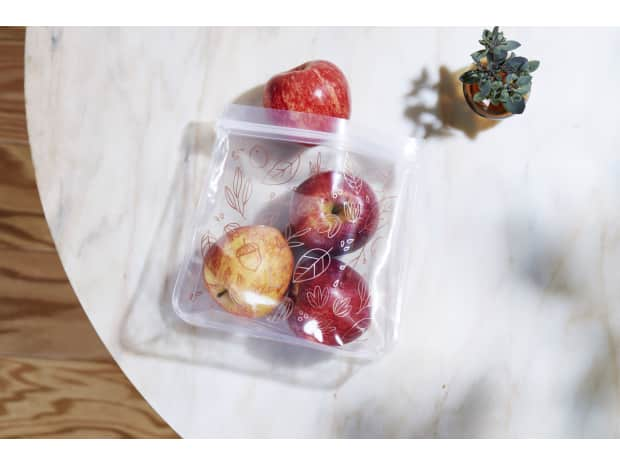
We love ordering takeout, but we don’t love the extra plastic and waste that comes with it. Learn how a few tips and tricks can make takeout more eco-friendly.
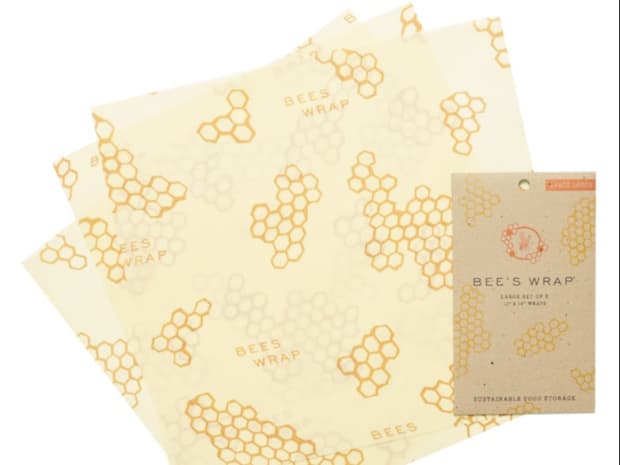
Single-use products are convenient for us but awful for the planet. With these reusable equivalents, you can kiss those single-use monsters goodbye.